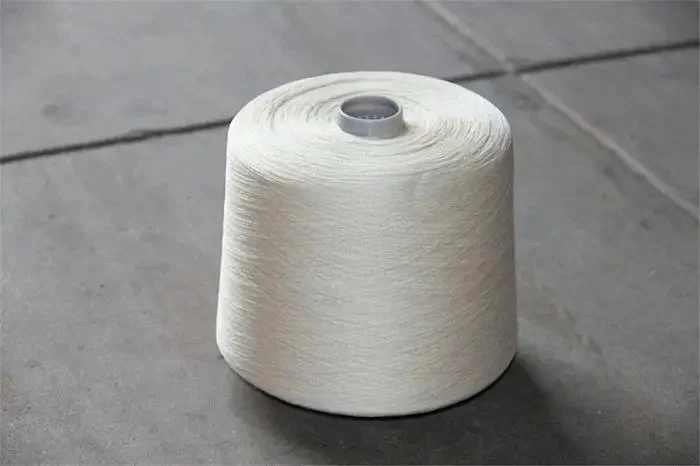Hemp yarn, derived from the Cannabis sativa plant, has garnered significant attention in recent years due to its unique combination of properties and sustainable production methods. As consumers and manufacturers become increasingly aware of the environmental impact of their choices, hemp stands out as a versatile and eco-friendly fiber option.

Strength and Durability: A Fibrous Powerhouse
Exceptional Tensile Strength
One of the most remarkable attributes of hemp yarn is its exceptional tensile strength. Hemp fibers are naturally strong, with tensile strengths comparable to steel when processed correctly. This makes hemp yarn ideal for applications requiring robust materials, such as ropes, canvas, and industrial textiles. Its strength-to-weight ratio is superior to that of cotton and even some synthetic fibers, making it a preferred choice for outdoor gear and durable clothing.
Longevity and Resistance to Wear and Tear
Hemp yarn's durability extends beyond its tensile strength. The fibers are resistant to abrasion, making fabrics made from hemp yarn highly durable and long-lasting. This resistance to wear and tear is particularly advantageous in high-use items like workwear, furniture upholstery, and automotive interiors.
Sustainability: A Green Fiber Option
Minimal Environmental Footprint
Hemp's cultivation requires few pesticides and herbicides, making it a more environmentally friendly crop than many others, including cotton. Additionally, hemp grows quickly and efficiently, using less water and producing more biomass per acre than most fiber crops. This high productivity and low input requirement make hemp yarn a sustainable choice that aligns with eco-conscious consumer values.
Carbon Sequestration and Soil Health
Hemp plants have the ability to sequester significant amounts of carbon dioxide from the atmosphere, which helps mitigate climate change. Furthermore, hemp's deep root system improves soil structure and fertility, enhancing soil health and biodiversity in agricultural ecosystems. By choosing hemp yarn, consumers contribute to practices that promote environmental stewardship.
Breathability and Comfort: Natural Fibers at Their Best
Exceptional Moisture Wicking Properties
Hemp yarn is renowned for its breathability and moisture-wicking capabilities. The fiber's microstructure allows for effective moisture management, making it ideal for athletic wear, lingerie, and summer clothing. Unlike synthetic fibers that can trap moisture and lead to discomfort, hemp keeps the skin dry and comfortable, even in hot and humid conditions.
Temperature Regulation
Hemp's ability to regulate temperature makes it a versatile fiber for year-round wear. In winter, its insulating properties provide warmth without bulkiness. In summer, its breathability ensures coolness and comfort. This natural climate control makes hemp yarn an excellent choice for performance wear and everyday clothing.
Versatility in Applications: From Textiles to Construction
Diverse Textile Applications
Hemp yarn's versatility extends across a wide range of textile applications. From high-end fashion to industrial fabrics, hemp can be woven, knitted, or spun into various textures and patterns. Its natural color and ability to take dyes well make it a favorite among designers seeking both aesthetics and functionality.
Innovative Uses in Construction and Automotive Industries
Beyond textiles, hemp yarn is finding innovative applications in the construction and automotive industries. Hemp-based composites are being used in building materials like insulation, paneling, and even as a reinforcement in concrete. In the automotive sector, hemp fibers are incorporated into biocomposites that reduce vehicle weight and improve fuel efficiency while maintaining safety standards.
Cost-Effectiveness and Scalability
Competitive Pricing and Market Availability
Despite its premium qualities, hemp yarn is becoming increasingly cost-effective as production methods improve and demand grows. With more farmers and manufacturers investing in hemp cultivation and processing, market availability is expanding, driving prices towards competitiveness with traditional fiber options.
Scalability and Future Prospects
The scalability of hemp production presents exciting future prospects for the fiber industry. As research and technology advance, new applications and improved processing techniques will further enhance hemp yarn's appeal. The potential for large-scale, sustainable fiber production makes hemp a cornerstone of a circular economy.
In conclusion, hemp yarn stands out among other fibers due to its unique blend of strength, durability, sustainability, comfort, versatility, and cost-effectiveness. As the world seeks more eco-friendly and resilient materials, hemp offers a compelling solution. Its potential to revolutionize industries and meet evolving consumer demands makes hemp yarn not just a fiber of choice, but a fiber of the future. By embracing hemp, we pave the way for a more sustainable, innovative, and resilient textile landscape.
http://www.asinyarn.com/hemp-yarn-compared-to-other-fibers-why-hemp.html

